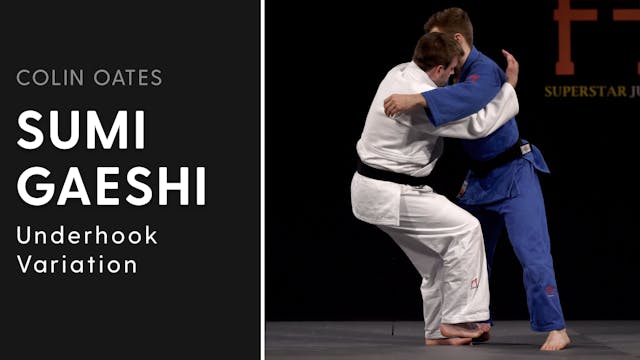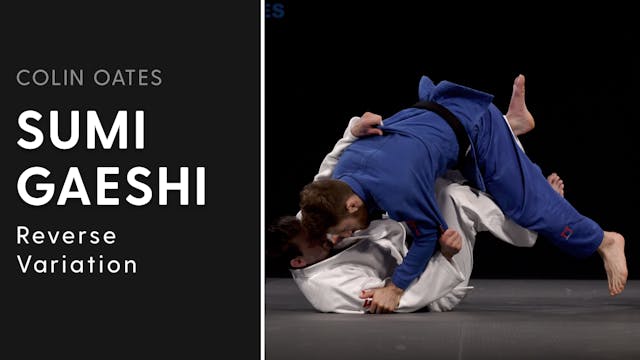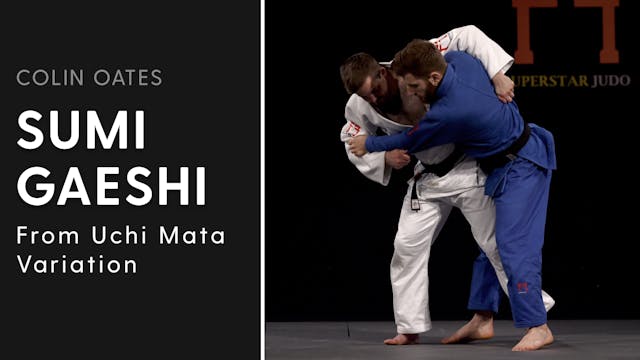Colin Oates regards his foot movement pattern as the single most important element to his Sumi gaeshi. He learnt this pattern from his Japanese coach, Go Tsunoda, which is traditionally used to set up the big forward or rear throws. Oates, however, managed to successfully incorporate it into Sumi gaeshi.
It comes from having close control of the dominant sleeve and his grip on the back. He says it’s the threat of throws like Uchi mata or Kosoto gari that help in getting a reaction from the partner – breaking their upright posture.
For it to be successful he has to get his back foot to switch places with his front foot. This starts the critical momentum needed to throw the opponent, which is combined with a circular movement and a big pull with the left arm.
Oates points out that without any type of movement pattern it’s extremely difficult to throw with Sumi gaeshi, as it’s too predictable. When it comes to the foot placement of the attacking leg Oates aims for the partner’s thigh but says that hitting either the upper or lower part of the leg is fine.
He reiterates that at this stage of the technique it’s all about getting the momentum in order to throw. This is what makes Sumi gaeshi really effective.
As for the execution of the technique, Oates aims to throw himself over the top of his partner. This means that he doesn’t leave himself in a vulnerable position in Ne waza and is another reason why the movement pattern is so critical, as it gives him the momentum to really roll through with the Sumi gasehi.
In a competitive scenario it looks like this. You can really see the importance of the momentum, as he sacrifices his weight backwards, keeping his opponent tight and under control.
Up Next in Sumi Gaeshi
-
Underhook Variation | Sumi Gaeshi | C...
Colin Oates’s underhook variation of Sumi gaeshi comes from when neither judoka has a sleeve grip. This technique evolved when Oates was chasing his opponent for the sleeve, but they were fighting hard not to give it up. As a result, momentum comes into play even more so than his standard variati...
-
Reverse Variation | Sumi Gaeshi | Col...
Colin Oates has an unusual reverse Sumi gaeshi, which perfectly compliments his standard variation of the technique. He learnt the reverse Sumi gaeshi from French World Champion Stephane Traineau early on in his career. However, he only incorporated into his judo several years later, but now cons...
-
Uchi Mata Variation | Sumi Gaeshi | C...
As with all of Colin Oates’s Sumi gaeshis, momentum is absolutely critical and it’s no different when it comes to his Uchi mata – Sumi gaeshi combination. Oates pre-plans this combination against opponents who are defensively strong against his Uchi mata.
The Uchi mata, however, must come with ...




1 Comment